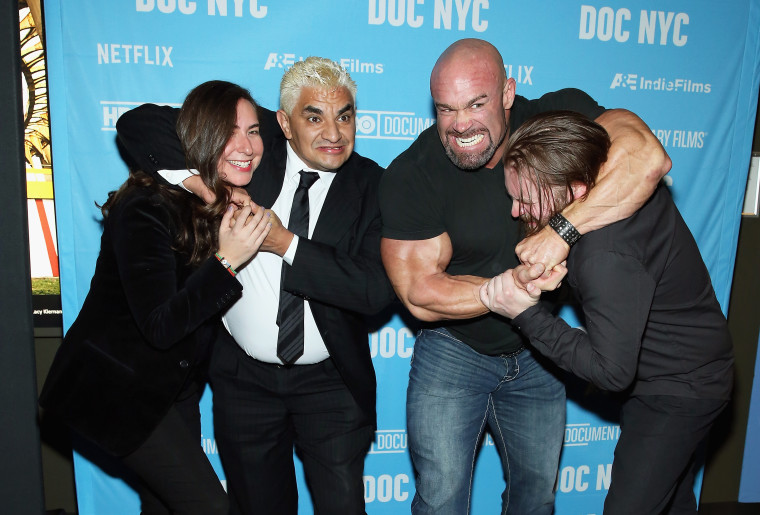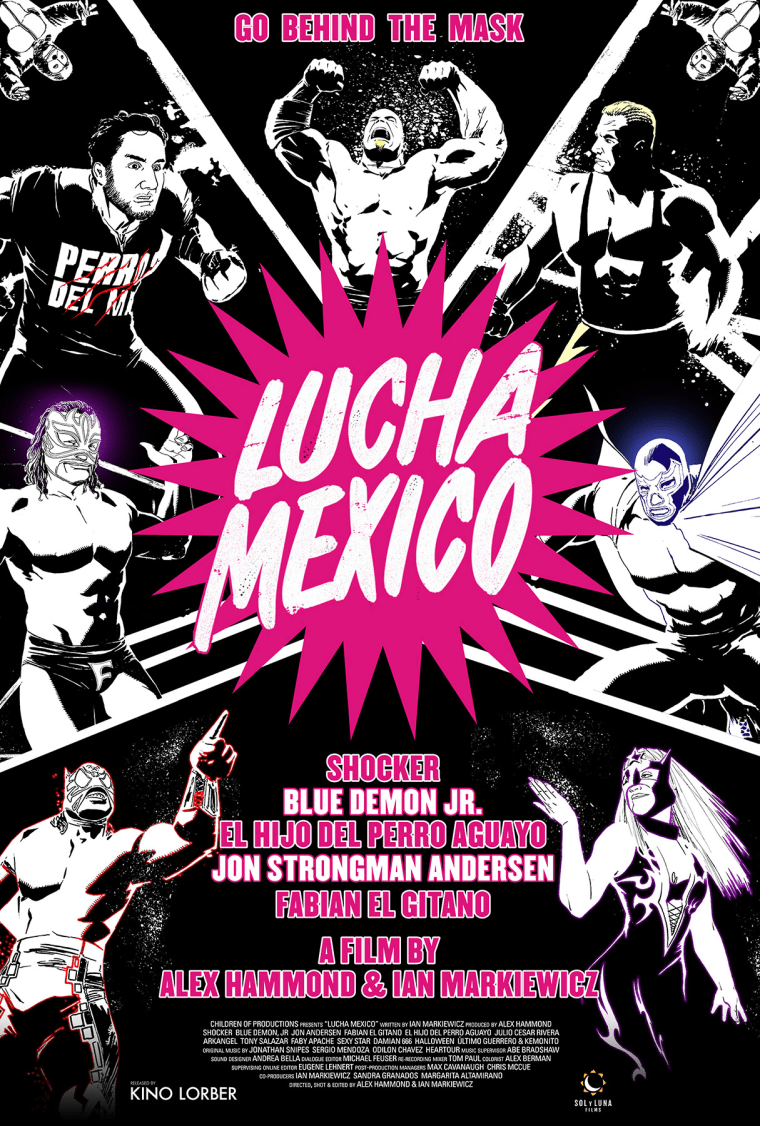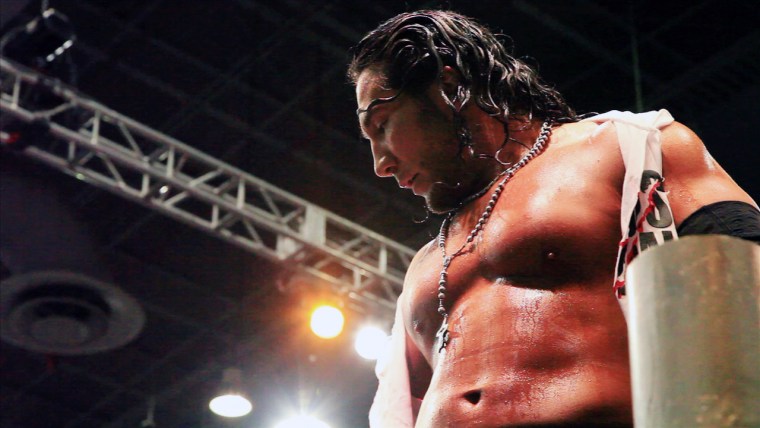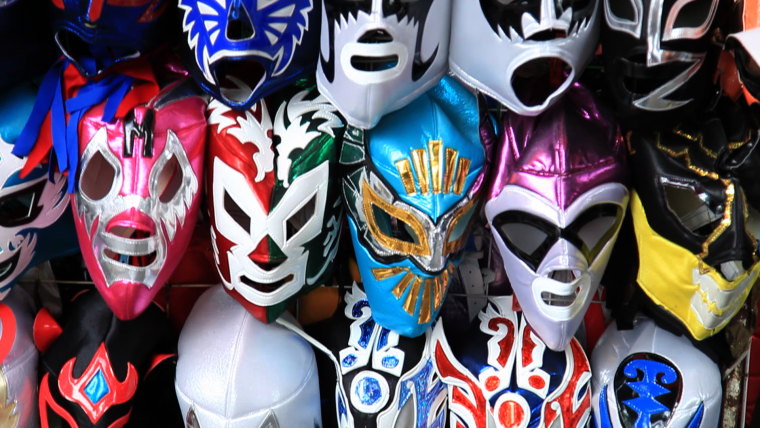For the longest time, documentary filmmaker Alex Hammond had wanted to work on a film which shed light on her Mexican heritage. The director of “Children of Haiti” and “Better Than Something," which explored the punk underground, grew up in Connecticut but spent nearly every summer in Mexico visiting family; her mother had immigrated to the U.S. from San Luis Potosí.
The result is “Lucha Mexico,” her new film created with longtime co-director Ian Markiewicz, which explores the dynamic subculture of Lucha libre, the beloved and more than century-old Mexican professional wrestling sport.
After four years of shooting in mostly Mexico, “Lucha Mexico,” is being released in theaters and on iTunes on Friday, July 15, playing in cities across the country, including New York City, Los Angeles, Chicago, and Houston, among others.
Lucha libre literally means “free fight,” and dates back to the Franco-Mexican War in 1863. The wrestlers are known to wear colorful masks, which hide their true identities, and some are known for their aerial maneuvers. They also characterize themselves as “good guys” (called “técnicos”) vs. the “bad guys” (called “rudos”).
RELATED: Lucha VaVoom? If You Don't Know What It Is, You'll Know Soon
“I knew the moment I saw Lucha, that this is what I wanted to make a film about,” said Hammond, 35, to NBC Latino. “The idea that these athletes put themselves in the ring and put their lives on the line is where the interest started. When we got in there, we realized this world was so big.”

Hammond said it’s a good time to shine a spotlight on this sport, since it has been growing in popularity in the U.S. as well. “Lucha Underground,” a weekly hour-long TV series which premiered in the U.S. on filmmaker Robert Rodriguez’ El Rey Network in 2014, is still going strong in 2016.
“Because it’s taken us five years to make the film from start to finish, we’ve seen lots of changes,” said Hammond about the growth of Lucha libre. “’Lucha Underground’ is getting a lot attention now —you’re starting to find them happening more often, I think because WWE is so big. They helped introduce the Mexican wrestlers. More people are exposed to it.”

One of the film’s protagonists is American Lucha wrestler John Andersen, who goes by the wrestling name, “John Strongman.”
“He came down to Mexico from San Francisco as a pro-wrestler, and we got to document his first time going to Mexico,” says Hammond. “He would live in Mexico for a month at a time — now there are more Americans moving down there to wrestle.”
Hammond says the "luchadores" (wrestlers) are like superheroes for Mexicans.
“They are very real for the people,” says Hammond. “When you go to any show, you’ll see a grandmother and a baby - it’s a family affair.”
The "luchadores" themselves also take their careers very seriously. They go to Lucha school, starting sometimes as young as 15, to learn the proper fighting techniques.

“These men and women are really athletes, and you see how hard they work,” says Hammond. “For a lot of them, their parents were wrestlers...It’s like a whole close-knit family. When you retire, you work as a wrestling coach.”
The film shows how fans idolize their superheroes, but it’s not so glamorous for the wrestlers themselves. Blue Demon, Jr., the son of the legendary Blue Demon — who was also an actor in many movies, as his wrestling persona, in the 1960’s and 1970’s — describes the way of life as “lonely."
"Out of 24 hours, I wear my mask for 18," says Blue Demon, Jr. in the film. "You have to be a loner and not go out too much, eat cold meals in the hotel. You can't go out at night, or you might be recognized."

It’s also a dangerous sport. Hammond says the famous El Hijo de Perro Aguarro died in the ring last year.
“We had to recut the movie,” said Hammond, because he was supposed to be one of the main characters. “It was a freak accident. He died wrestling."
Hammond said that throughout the making of the film, several wrestlers died from various causes.
But ultimately, the luchadores think it's worth the risks and the sacrifices. One of the trainers told Hammond that ‘in order to be a wrestler, you have to be hungry and want to have that triumph.’
"That’s essentially what we wanted to capture," she said, "what drives them to constantly get back in that ring.”
Hammond doesn’t know yet where her next project will bring her, but she says she’s always been interested in exploring different environments.
“I like getting people to feel like they are there,” she says. “For ‘Lucha Mexico,’ I wanted to show also how beautiful Mexico is - not just what you see in the news — it’s not just drugs.”
